Common Gull Larus canusFirst-winter with mixed age primaries, Warks, October 2018 |
On October 26th, 2018, the Common Gull depicted in Plates 1 to 5 below was observed at Kingsbury Water Park in North Warwickshire. At first sight it appeared to be a relatively straightforward 1W individual, though with more wing-coverts renewed than in many individuals - Plates 1 and 2.
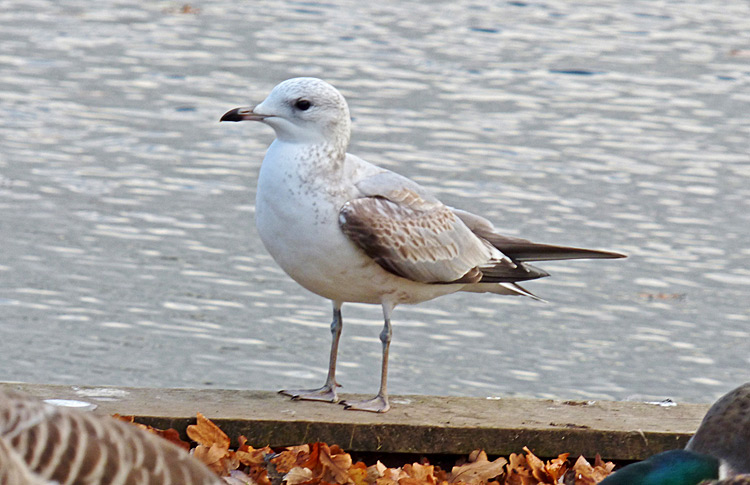
Plate 1.
© A. R. Dean
In plates 1& 2, note the rather extensive pale grey in the greater and median coverts, so that the gull lacks a well-defined and 'isolated' saddle contrasting with brown-dominated coverts (compare with 1W in Plate 6).
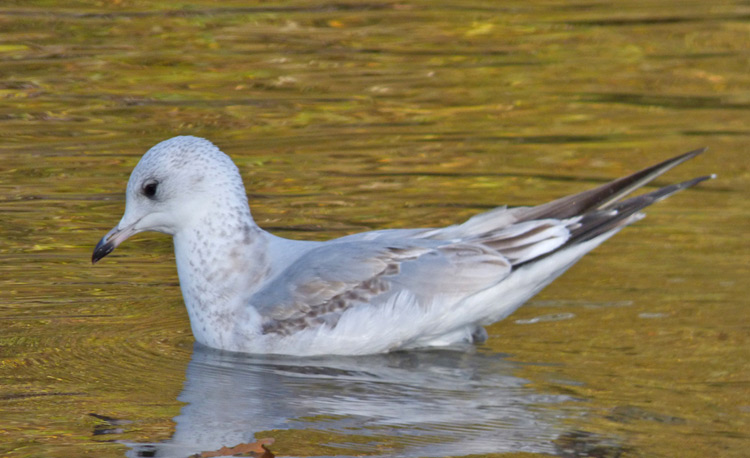
Plate 2.
© A. R. Dean
It displayed a full, broad tail-band, as in typical 1W individuals. Surprisingly, however, when it began to preen and wing-stretch, it became clear that the two wings hosted primaries of different generations, those on the right wing being first generation but those on the left wing being second generation, as in a 2W individual. In Plate3 note the large white mirror on p10 on the left wing.
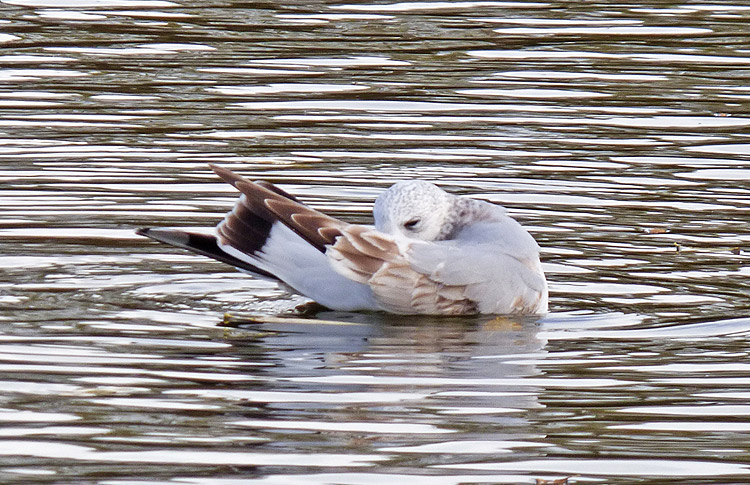
Plate 3.
© A. R. Dean
The second generation pattern of p10 on the left wing is shown to full advantage in Plate 4, where it can also be seen that the primaries on the right wing are first generation.
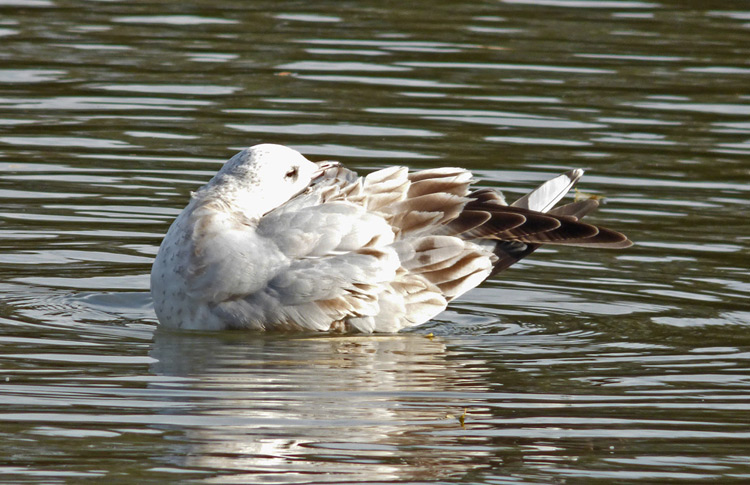
Plate 4.
© A. R. Dean
The outer primaries visible on the right wing in Plate 5 have dull brown outer webs i.e. as expected in 1W. In contrast, the underside of the left wing demonstrates that most or all the primaries there were 2nd generation.
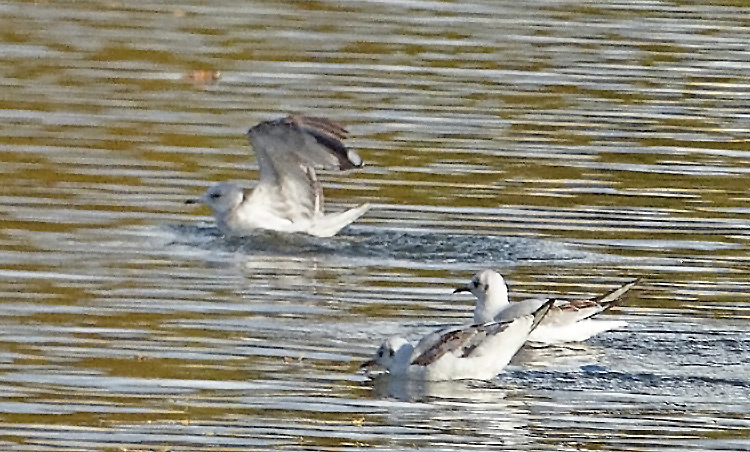
Plate 5.
© A. R. Dean
The 2W-style primaries on the left wing and the rather extensive covert moult raise the question of the age of this intriguing individual. Was it a retarded 2W or a 1W with anomalous 2W primaries on the left wing? The clear-cut 1W tail-band and some retained first-generation wing-coverts, together with some retained juvenile scapulars, indicates that it was indeed 1W. Peter Grant in 'Gulls : a guide to identification' (1982, 1986) wrote: 'When a feather is lost accidentally, its replacement usually resembles that which would normally have grown at the next moult' and Peter Adriaens (in litt.) suggested that this individual had somehow lost most / all the primaries on its left wing and replaced them with the 'next' generation 2W-style primaries. This seems a very plausible explanation, though for such a young individual to have grown two sets of primaries, including a full set of second generation feathers, in such a short space of time seems remarkable. One can only speculate how it came to lose most or all the primaries on its left wing and how it fared when re-growing the entire set.
For comparison, Plate 6 shows a typical 1W Common Gull photographed in West Midlands in December 2010 i.e. two months later than the enigmatic individual in Plates 1 to 4. Note how the mantle and scapulars create a well-defined .saddle', with the brown-hued coverts having a rather evenly variegated appearance. Compare this with the appearance in Plates 1 and 2.

Plate 6
© A. R. Dean
Acknowledgement
I would like to thanks Peter Adriaens for his helpful suggestion that the second-generation (2W-style) primaries on the left wing resulted from the inadvertent loss of the first-generation primaries. Peter notes that he has observed such individuals previously, though not involving so many primaries.
|
|
|
|
Home |
Mediterranean
| Laughing |
Franklin's |
Little |
Sabine's |
Bonaparte's |
Black-headed |
Ring-billed | Common |
Lesser Black-backed | |